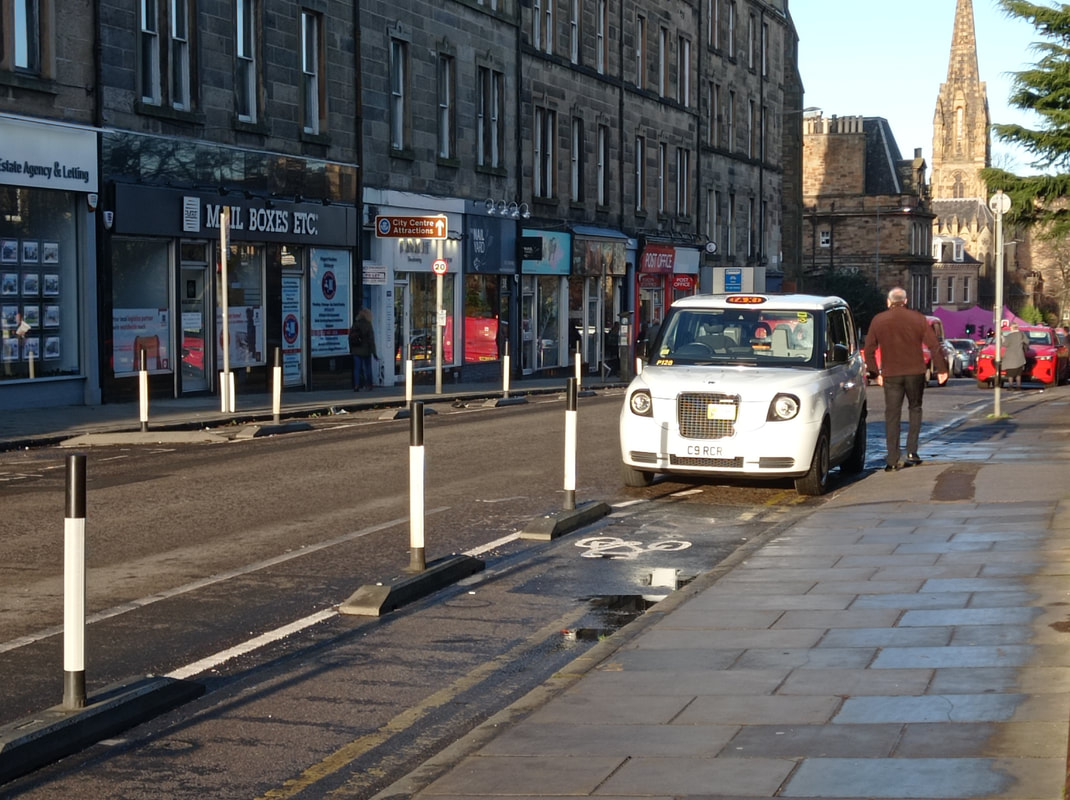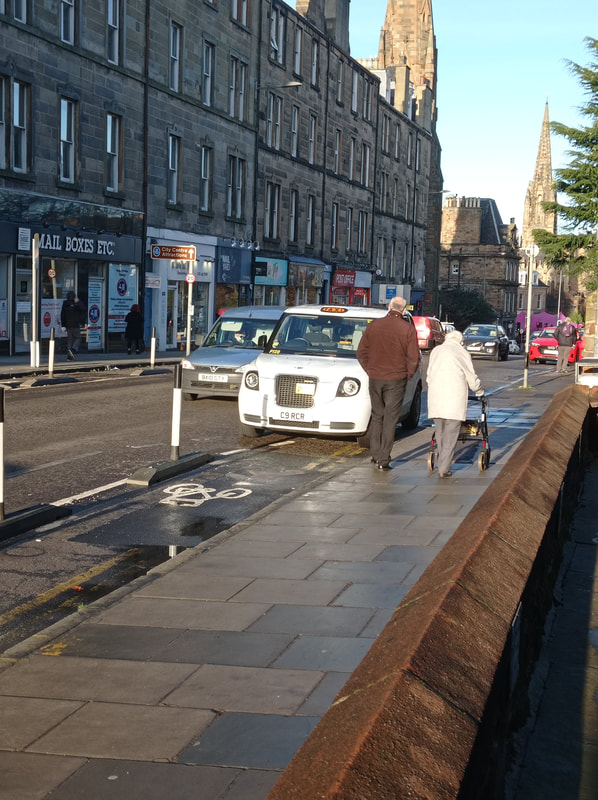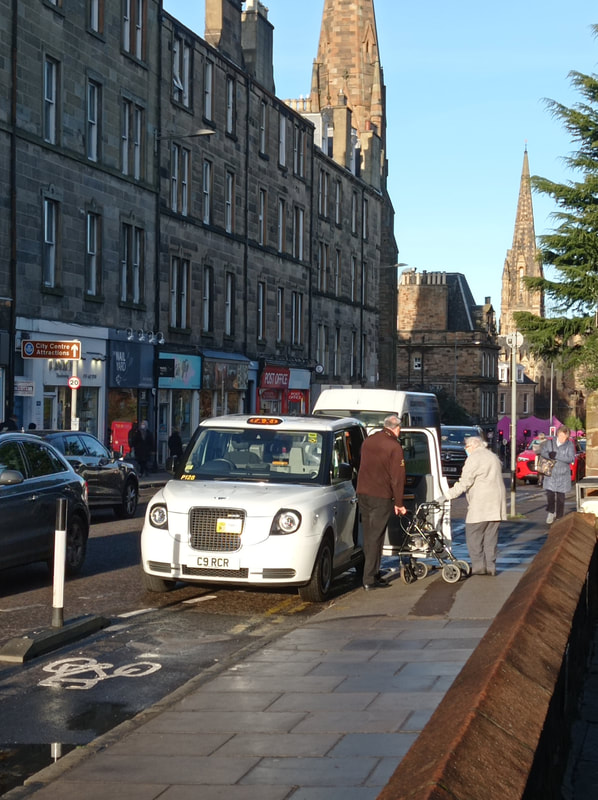Right now, the City of Edinburgh Council is consulting about the future of its temporary ‘Spaces for People’ schemes. As in many places, a range of measures have been installed to aid social distancing and encourage active travel; typically pop up cycle lanes, widened footways and roads closed to motor traffic. There seems little doubt that public opinion is polarised, with many people and businesses seeing them as half-baked measures frustrating everyday movement (especially by car) and others seeing them as an essential step towards a more sustainable future.
There is also little doubt that some schemes are a cause of deep concern for many disabled people. A ‘poll’ carried out by Disability Equality Scotland last September (bit.ly/3pcIoS2) found that 71% of respondents said that their life had been made more difficult by Spaces for People (compared to only 10% who said it had made life easier).
I was walking along Morningside Road in December last year when a taxi pulled up almost beside me. It stopped just at the entrance to a segregated pop-up cycle lane, blocking it entirely so I paused to see why he did this. The taxi driver left his cab and began looking for his passenger. After perhaps a minute, he walked on and turned the corner into Church Hill Place, returning a few minutes later accompanying a very frail lady using a walking frame, I would guess in her late 80s or 90s. They made their way slowly to the taxi and the driver helped her in, before then driving off.
This scene was unsatisfactory for everyone involved: the passenger had to walk a significant distance despite her very obvious mobility difficulty; the cycle way was blocked and unusable for the time the taxi was stopped; the taxi driver spent longer on the job than he would no doubt have liked.
Access to the kerbside is essential for many disabled people to travel - not only by taxi, but also by community transport services and especially for Blue Badge holders (who number over 200,000 in Scotland) whether as the driver or passenger. The introduction of extensive (39km) new segregated cycleways during the pandemic presents a real challenge for people who need access to the kerb. On the other hand, intermittent cycleways which stop and start to permit loading and parking at regular intervals are clearly also problematic, pushing cyclists back into motor traffic flows.



 RSS Feed
RSS Feed
